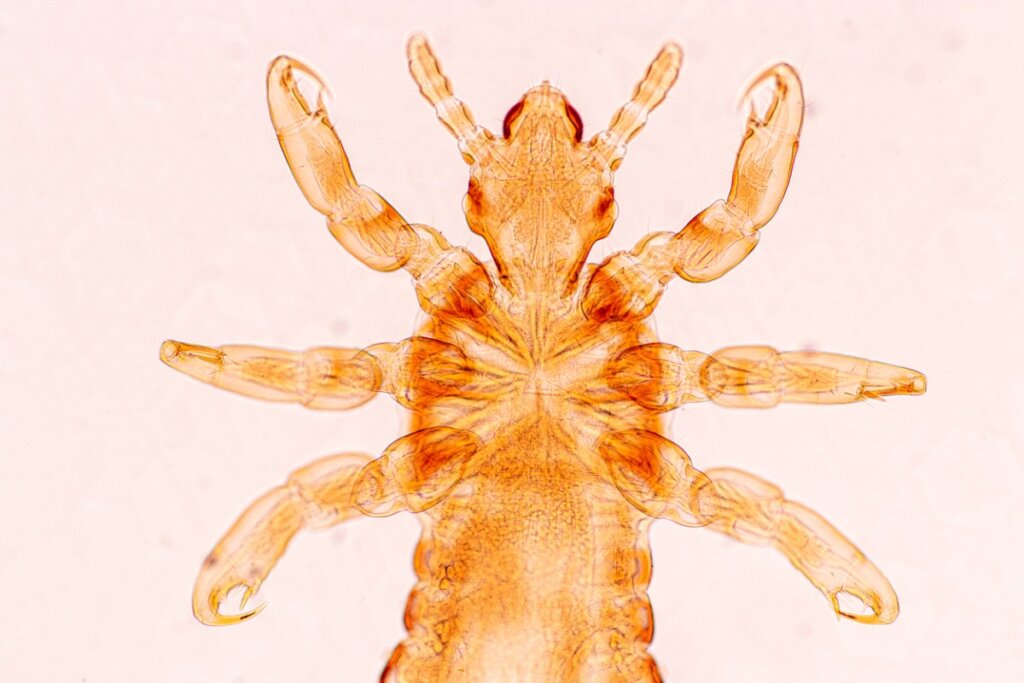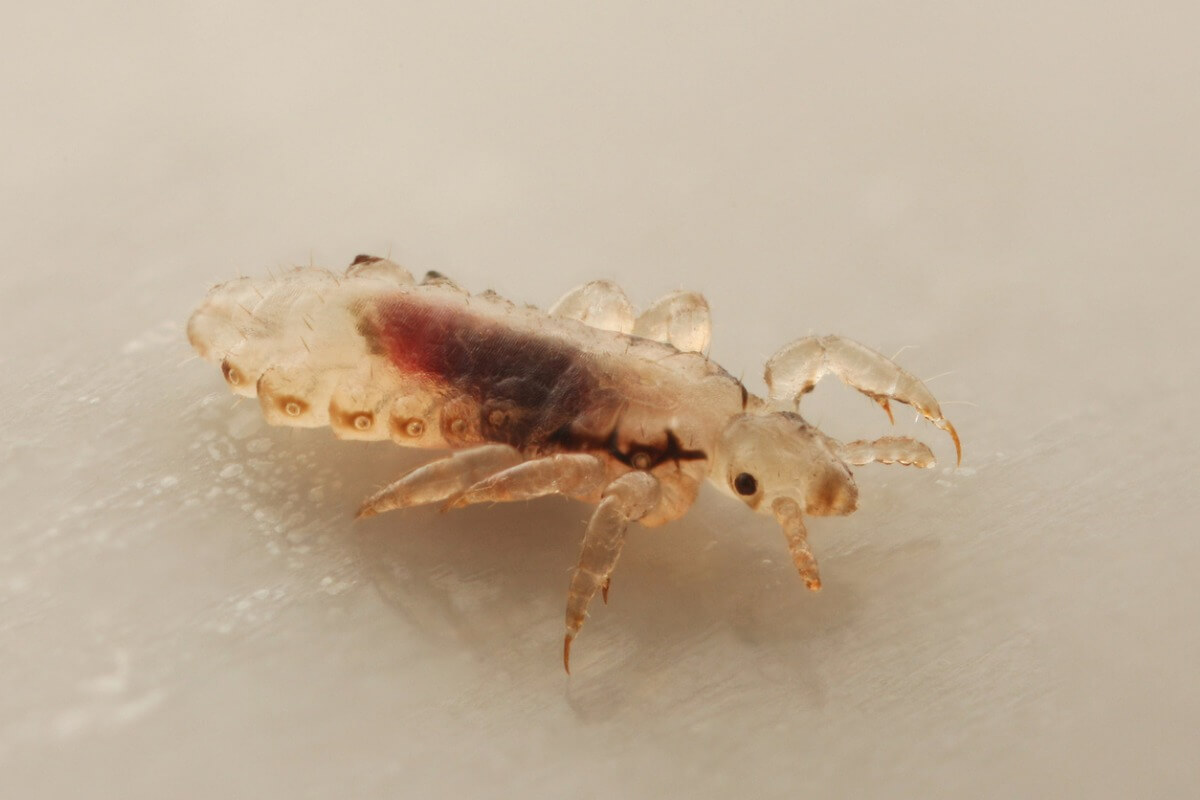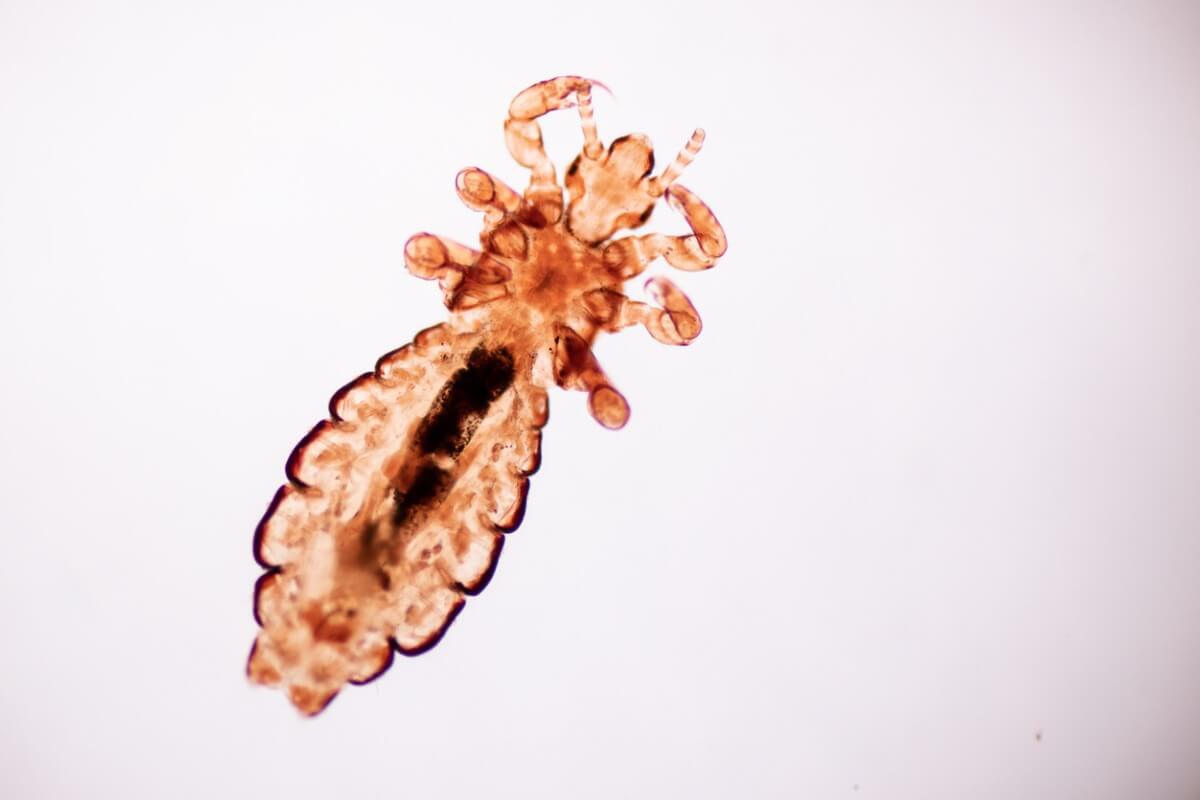The Life Cycle of Lice

Knowing about the life cycle of lice is one of the tasks facing parents as their children go back to school. These invertebrates have earned their bad reputation by parasitizing the heads of human beings, generating a more than justified rejection and aversion.
Little information is known about these small insects that inhabit different regions of the body depending on the species. Likewise, they aren’t only a problem for humans, but we can also find them on our pets. The best form of defense is always to attack, so get up to date on the life cycle of lice and face them “head” on (if you’ll pardon the pun).
Characteristics of lice
Lice are hemimetabolous insects that belong to the order Phthiraptera and are known worldwide for being obligate ectoparasites. In particular, they parasitize certain species of birds and mammals. Moreover, their transmission mechanism is very specific, as they don’t “jump” from one head to another in a simple way as people often think.
Lice species
To differentiate between lice species, we need to distinguish between chewing and sucking lice. The main divergence between the two suborders is the type of feeding carried out by their members.
The chewing lice, belonging to the suborder Mallophaga, feed on the dermal desquamations and feathers of their hosts. On the other hand, sucking lice are classified within the suborder Anoplura and follow a very special diet. The latter are identified at an ecological level as hematophagous and are characterized by feeding on the blood of their hosts.
In both suborders, the sex of the individual can be determined by observing the end of its abdomen. However, this feature of sexual dimorphism doesn’t only allow us to differentiate males from females, but also the differences between species. To differentiate between chewing and sucking lice there are certain physical characteristics to take into account:
- The shape and size of the head in relation to the thorax.
- The type of antennae.
- The specialized oral apparatus: this can be of the chewing type (Mallophaga suborder) or of the sucking type (Anoplura suborder).
- A united or segmented thorax.
- The shape of the genitalia.

The life cycle of lice
The species we’ve selected to explain the life cycle of lice is Pediculus humanus capitis, also known as the head louse. First of all, it should be pointed out that the condition caused by this animal is called pediculosis and occurs exclusively on the human head.
Being obligate ectoparasites, lice don’t survive more than 24 hours away from their host, mainly because they lack the right temperature and a food source in the environment. However, if they remain on the human head, they can live between 22 and 35 days and produce a hundred eggs before dying.
The life cycle of head lice consists of the following stages:
- Nit: This is what we identify as the louse egg and is present during the first 6-7 days of the cycle. The nit attaches itself to the scalp and has a high survival rate. 60% of the eggs survive until hatching.
- Nymph: During the next 9-10 days the nymph develops; it emerges from the egg and is invisible to the human eye. Throughout its growth, the nymph undergoes up to 3 different molts of its exoskeleton.
- Adult louse: After the last molt of the nymph, the adult louse emerges and survives for 15-16 days. Each female lays between 4 and 8 eggs a day, separated from each other, but all of them are attached to the hair with a sticky, water-insoluble substance that prevents them from falling off. In total, females can produce up to 100-200 eggs in their lifetime.
When the lice bite the scalp to get to the blood, the itching and scratching typical of this condition occurs. In some cases, ulcers develop from scratching, as not all people have the same tolerance to this parasitism.
Can pet lice infect humans?
As mentioned above, different species of lice attack mammals. But can lice be transmitted from pets to humans and vice versa? The answer is no.
The lice that parasitize pets and humans belong to different species. A high level of specificity has been observed between lice and their hosts. In other words, each species in this group parasitizes only one type of mammal or bird.
Lice diseases
The lice species that parasitize dogs and cats are found in the suborder Mallophaga. As chewers, these invertebrates feed on the epithelial debris of pets. They are, therefore, associated with certain skin diseases, such as dermatitis, crusting, alopecia, and anemia (but only when parasitism is very intense).
Mammals with compromised immune systems, old or very young, are more likely to develop more severe lice infections. However, the contagion can occur naturally between specimens of the same species regardless of their condition.

In conclusion, we want to emphasize the importance of knowing all about this type of arthropods and how to identify them. However, keep in mind that this article is only a guide, so if you suspect a lice infection, you must go to the doctor.
Knowing the life cycle of lice is necessary at a pathological and biological level. These invertebrates are of great interest and learning about their biology will allow us to fight them more effectively in the future.
All cited sources were thoroughly reviewed by our team to ensure their quality, reliability, currency, and validity. The bibliography of this article was considered reliable and of academic or scientific accuracy.
- Pérez, J. M. (2015, 30 junio). Clase Insecta Orden Phthiraptera. Revista IDE@ SEA – Sea-entomologia.org, 51: 1–11(ISSN 2386–7183). http://sea-entomologia.org/IDE@/revista_51.pdf
- Universidad Complutense, & Galisteo Rivero, F. (2017). Trabajo Fin de Grado: Pediculosis. Facultad de Farmacia, Universidad Complutense. http://147.96.70.122/Web/TFG/TFG/Memoria/FRANCISCO%20GALISTEO%20RIVERO.pdf
- ESCCAP. (2006). ECTOPARÁSITOS: CONTROL DE INSECTOS Y GARRAPATAS QUE PARASITAN A PERROS Y GATOS (BIOLOGÍA, EPIDEMIOLOGÍA, SIGNOS CLÍNICOS Y DIAGNÓSTICO). ESCCAP: CONSEJO EUROPEO PARA EL CONTROL DE LOS PARÁSITOS DE LOS ANIMALES DE COMPAÑÍA. https://www.esccap.org/uploads/docs/22hejwfj_esguian3_ectoparasitos_altausb.pdf